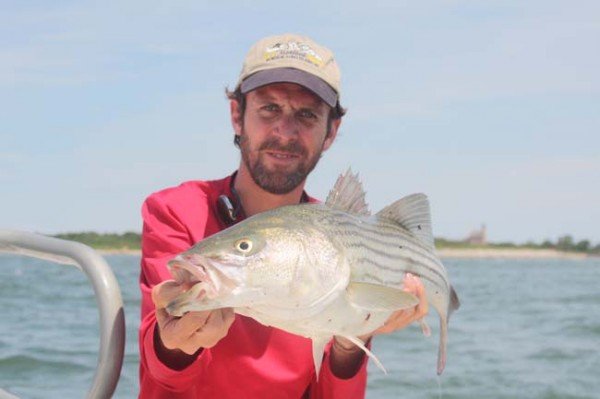
Rod testing on real animals off Orient Point State Park, Long Island, New York. This striper wanted in the game.
By Skip Clement
[dropcap]B[/dropcap]ubba Smith wouldn’t use Tiger Woods’ driver because the flex at the club head and stiffness in the upper shaft would be different. And so it is with fly rods.My taste in rods and yours may be quite different, but we should be able to tell if the rod is stiff and roughly describe the action. However, it could always be argued that both determinations are disputable and vague. At one point, ORVIS did invent a gauge that could be used to exactly measure elements of action, recovery and other attributes of fly rods in motion, but they could not convince other players in the rod industry to join in and use it as an acceptable industry standard.
Back to the Future
It’s funny, 30 years later, and just when the fly rod industry convinced everyone who said they were excellent fly casters to join their fast action and stiff rod believers club, Jerry Siem, SAGE’s rod guru, goes retro and reinvents a slow action and soft rod called CIRCA. SAGE’s spinners spun the following about them: “ . . . slow action rod category with a deliberately more relaxed casting tempo combined with a fast recovery, pinpoint accuracy and extraordinary overall performance. . .” In all fairness, a few folks that went to the Reno, Nevada AFFTA show said that were surprised at the distance they could get out such a whippy, skinny rod.
Dave and Margot Redington’s South Fork Rod Company (SFRC) build retro glass rods using a thermo active polyester resin along with E-Glass (the highest quality E-Glass you can buy in the U.S.). That combination along with decades of experience produces the best hoop strength of any other type of glass rod made today. These SFRC short rods (seven models ranging from 6- to 8-feet in 2- to 5-weights cost $195 to $325 – depending on the model) are all designed for short range loading and accuracy just as the CIRCA rods are from Sage. The SFRC rods come with a non-sanded finish or with a sanded, clear coat finish. Also, with these glass rods, you can easily go up or down in fly line weights using just one rod and successfully produce different casting and presentation results.
Dave Redington also makes some of the finest bamboo rods (five models ranging from 6-foot 3-inches to 8-feet and 1/2-inch in 4- to 5-weights that cost $895 with one tip and $1,225 with an extra tip). These bamboo rods by Dave Redington produce similar actions and feel (stiffness) that transfers all the way into your hand as do any good bamboo, glass or CIRCA type rod; aiding dry fly presentations.
The value of slower action and rods that bend all the way down to the butt, as is the case with these shorter retro glass rods and carbon fiber SAGE rods, are improved accuracy with a deliberately more relaxed casting tempo – as SAGE puts it. What it really means is that you let the rod do the work and that it’s easier to “feel” what’s going on with the rod, line, leader and fly. The significant sacrifice being distance, but these sticks are small stream and honey hole rods that can drop dry flies on a dime and do it ever so softly; just like the best bamboo rods do. SAGE’s (Konnetic technology) packs more carbon fiber into a smaller diameter resulting in a radically narrow taper through the length of the rod. Siem said: “My goal for this rod was to apply the performance advantages of modern materials on a very sleek, slender shaft that would load down in the hand for a fishing tempo like glass or bamboo.” Granted, the CIRCA’s are only designed for 2- through 6-weight rods ($745 to $775) and not designed for us pick-up truck types that double-haul in the brine. These retro rods, as they’re now called, have been on the comeback and in vogue for a few years so SAGE is actually catching up rather than leading. Dave Redington’s SFRC has been making several retro rod models and bamboo rods for years and sells them to trout lads and lasses el norte, smallmouth bass and panfish addicts around the country.
Playin’ in the bigs
Any 7-weight to 12- weight rod, considered the saltwater rods menu by most, that bends down to the butt with a slow action would be a bad match and would not perform well with heavier fly lines and bushy flies we use here in the brine or for big, freshwater largemouth bass. But a medium fast or fast action saltwater fly rod that isn’t 2 X 4 “stiff” can mimic the best feature of those retro rods, accuracy, without sacrificing distance. And they also let the rod do the work.
We, Capt. Andrew Derr (field editor at FLM.com and professional guide), Don Reed (president of Salt Water Fly Tyers of Jacksonville, Florida and fly tying editor for FLM.com) and I (a south Floridian and publisher of FLM.com), had a chance to test some pretty special fly rods on our home and away courts these past few months. Here’s our observations and what a few of the rod designers had to say about their intentions on performance. Collectively, all the rods we cast were 9-weights, with 9-weight floating fly lines by Scientific Angler (Mastery Textured) and Nautilus’ NV 8-9.
NOTE: The rods tested are not listed in any order to suggest number one is better than number five.
1. Mystic’s Tremor T993-4 Salt Water Fly Rod – Staff consensus
This 9-foot, 3 inches long fly rod defies convention, but it is well balanced and calibrated to perform in all conditions. We all agreed we could chuck it all day and that it did perform well in windy conditions. If presentation has merit, and sight fishing for bones and other flats species is your schtick, then this is a great rod to own and you wouldn’t be up a creek if by some stroke of luck a permit ate your Gotcha fly. It’s a stout rod with a comfortable fighting weight for formidable opponents.
It does take a little getting used to
We each spent more time with it than the other rods tested, but here’s the deal. Most 9-foot rods that are self classified as fast action and “stiff” are so because the butt is like a 2 X 4 and the tip is slimmed down and materially engineered to make it a fast action with quick recovery. What Mystic did with the Tremor T993-4 was beef up the middle section and make the added 3-inches produce medium fast action with suppleness; although that sounds contradictory and a hard blend, you’ll have to try it to feel how that translates. Strike sensitivity is also a really noticeable feature. Capt. Andrew Derr said: “I could lay down a 5-inch long 2/0 Deceiver in a stiff wind with this stick.”
Finish and all parts contribute to a fly rods performance
The Tremor T993-4 rod components: reel seats are constructed with double locking rings. The reel seat is machined from aircraft-grade aluminum and is light, strong and most corrosion resistant metal available with a perfectly integrated hook keeper that protects both the point and the angler; guides are constructed of a solid titanium-alloy frame (65% lighter than stainless steel) and 100% corrosion proof; stripper guides are quad legged and provide sturdy lateral stability, the ceramic rings are diamond polished nanolite almost eliminates any friction; snake guides and tip-top are made of light wire stainless steel and are hard chrome coated. Mystic uses the highest grade cork for its grips and fighting butt (high density cork). The dark blue – high gloss finish and warps make this fish catching machine more than a little attractive.
Here’s what working guide and instructor, Andrew Derr had to say about Mystic’s Tremor T993-4 Salt Water Fly Rod: “This rod is unique in its slightly longer length. This rod would be equally at home on the salmon stream as it would be on the flats. While still considered “fast action”, is a bit slower than the rest of the rods we tested and would be great for wading flats with its softer tip (great for delicate presentation). Kayakers, canoe owners, and deep waders may benefit from it’s longer length as well. Craftsmanship is very sound with quality reel seat, guides, and large cork grip.”
In an interview with Dennis Klein, we asked him to summarize design intent of the Mystic Tremor
“The Mystic Tremor Salt Water Series was designed to allow delicate presentations to extremely spooky fish. What we realized during beta testing is that the rod is not only is a great saltwater rod, but also doubles well in fresh water for steelhead, salmon and those illusive musky that are gaining popularity in the fly fishing arena.” Klein went on to add: “This rod will simply do it all.”
Website: mysticoutdoors.com
2. Echo 3S 990-4X 9’0″ # Line – Staff consensus
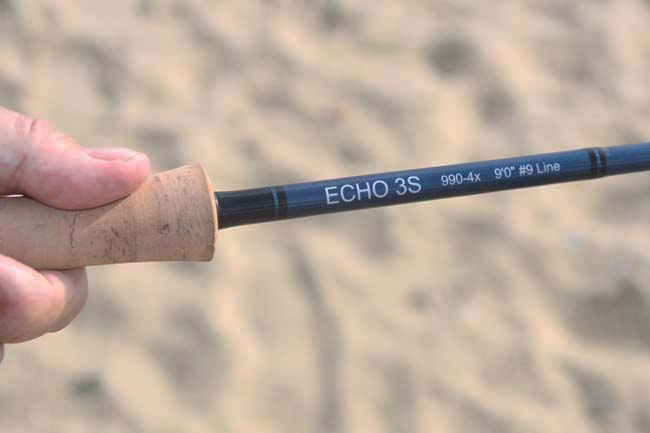
Tim Rajeff’s much improved Echo 3S Saltwater getting ready for casting trials on Long Island, New York.
The Echo 3S is a great improvement over the Echo 2. It is faster and has more lift power and backbone. The Echo rods have always been rough and ready tools and this Echo 3S 9-weight we tested is in that same class. We each thought it was easy to cast and did not under perform in the wind with big bluefish flies with #5 wire bite guards. Capt. Derr had the following to say about the Echo 3S: “This rod is light in the hand. Fast action with some flex in the tip. A really great blend of power and finesse. It is finished beautifully. All wraps were perfect. Guides, reel seat and cork were all of high quality. My favorite Echo to date. Slightly reminiscent of the Sage Xi2, perhaps a touch faster.”
We all agreed that its price point, performance, fit and finish, an Echo 3S would find a way into our tool boxes sooner then later. The square cordura covered rod case was an appreciated feature – doesn’t roll off the dock. At $380, this rod is a tough one to say no too.
Tim Rajeff, president and owner of ECHO, had this to say about the ECHO 3S rods and his company in general: “Our Echo 3 series of rods has been something burning to accomplish for many years. With incorporating the latest in graphite technology and superior grade components we were able to create a light weight, super smooth casting rod with supreme feel and extreme durability. These are the coolest rods we have produced to date.” Hey, Tim, we agree.
Website: rajeffsports.com
3. Rise Fishing Company 9-weight, 4 piece , 9-weight line – staff consensus

Don Reed, fly tying editor for FLM.com and owner of Saltwater Fly Tyers in Jacksonville, Florida puts the Rise “nine” through its paces on his home turf. Nautilus’ NV 8-9.
The first thing we all appreciated about this “nine” from Rise was it’s lightness, balance and calibration. It’s a rod with a very fast action and stiff enough to really stick a fast moving striper, blue or albie. In the northeast, from about summer all the way to winter in the Chesapeake, these fish chase bait and the action is mostly bait balls surfacing for just a few moments, then down again, so casting with a nice fast action rod will get your fly where it’s supposed to be now, not later. The Rise was built on that premise and met its design mark – especially so after some post 2011 makeovers.
Capt. Andrew Derr, a veteran of these northeast waters, had the following to say about the Rise 9-weight we tested: “Extremely light in the hand and very, very fast. This rod seems perfect for the high winds and big flies for which the northeast is known. After all, that is where Rise makes its headquarters. Rod is adorned with attractive hardware and quality cork grip. I found making long casts with this rod very comfortable with plenty of power left in the tank.”
Capt. Derr interviewed Steve Bechard, president of Rise Fishing Company on how their vision about fly fishing and building fly rods came about? Steve said: “Being guides we felt like we could add more in the design process and put a different approach to it. Like all of our rods, the Level Series were not only tested in house, but for a whole season on several of our pro staffs’ boats. Our feedback came from them and their clients. These rods were in hundreds of clients. This unique approach led us to what we feel is one of the best all around rods on the market.” He went on to say: “We will always keep this approach. Rods designed by guides and used by their clients. Being a small company allows us to take our time to make sure we put out the best product we can.”
Website: risefishing.com
4. South Fork Rod Company TS9094, 9-foot, 4 piece for 9-weight line – Staff consensus
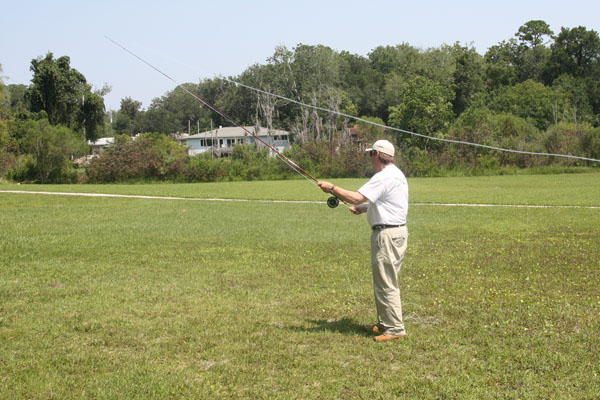
Don Reed, owner of Saltwater Fly Tyers, pitching a South Fork 9-weight at a local park in Jacksonville, Florida overlined with an 10-weight line.
Dave Redington and his wife Margot have been making this rod for more than a dozen years, and little has changed. It’s the same rod that stood the entire fly rod manufacturing industry on its head in the late 1990s when Dave teamed up with the still ubiquitous Jim Murphy to launch the •Redington Fly Rods Company. They brought out a quality rod at less than a half the going price with equal, if not better, performance characteristics. It’s an IM-6 modulus rod, but with Dave’s unique rod building techniques and singular skills, this ho-hum technology isn’t ho-hum when it’s working the beaches or off the bow.
[information]
NOTE: Redington Rods was sold to Sage Rods, which is now part of a wholly owned subsidiary called The Joshua Green Corporation of Seattle, Washington which the subsidiary Far Bank manages fishing products they manufacture and distribute, Sage Rods, Redington Rods and reels and RIO.
[/information]
Capt. Derr keeps a SFRC 10-weight on his bay boat and here’s what he had to say about the 9-weight. South Fork’s 9-foot, 9-weight line by Dave Redington expresses his expert craftsmanship in all the details from wraps to finish. This rod is med-fast action but flexes just enough in the tip so that you can feel the rod doing a lot of the work. It’s a great rod for presenting a crab to a wary permit or chucking Bob’s Banger’s in the wind. This workhorse would be a welcome addition to any casters arsenal. Don Reed and Skip Clement liked the overline performance.
Collectively, we found the SFRC 9-weight easily handling big flies and without gagging in the wind and it took on overlining easily.
Website: southforkrodcompany.com
5. Sea Level Extreme 7-foot, 11-inches, 4-piece for 9-weight line – Staff consensus
Sea Level Rod 7-foot, 11-inch rod is very unique and something of a specialty item. It’s shorter length is like that of a boat rod for sailfish where the emphasis is on fighting the fish rather than making beautiful casts all day. Foam grips, lower wells and upper fighting grip (like on a “switch”rod), adorn the short 9-weight we tested. Even still, the rod allows decent casters to chuck out 60-feet pretty easily. Because of its stout design, the Sea Level Extreme could be a good rod for powerful fish that do not require long casts. I would imagine it would be a fun rod for tenacious albies and bluefish, where putting the wood to them quickly is paramount. We think the real performance advantage to these specialty boat rods is in the heavier weights. That said, we think the Sea Level Seven Eleven Bass Rod (8-Weight) overlined performs in a similar way to Sage’s Bass Rod, which is popular amongst the FLM staff.
In an exclusive interview with Ray Hutcherson (RH), Sea Level FlyFishing’s owner, Fly Life Magazine.com asked:
FLM: Why the divergence from conventional wisdom?
RH: “I developed the ‘Extreme Inshore’ series rods as a fish fighting tool.” He went on to add this: “Most all quality fly rods cast great in a ‘static’ condition, but when you are facing a head wind it is a different story.”
FLM: What were the design considerations?
RH: “When designing this rod I considered several factors, the first, and I felt that it was the most important was its ability to fight fish. We chose to make it 8-foot (7-foot, 11-inches) so you could really put some heat on the fish. This also makes it much better for working with fish up close and personal.”
FLM: Any other factors?
RH: “Even at 8-feet a 4-piece rod made sense to me for travel. The fore grip on all sizes from 7-to 10-weight was also something new. I don’t believe there is another production rod with fore grips on all sizes. EVA grips really work and feel great they hold up for the long haul with extreme use.”
We all agreed that it’s shorter length make it better fighting machine (especially for boaters) and not at all a laggard casting stick in the lower weights. Presentation was not at the top of the designer list of needs. It looks a little different with its foam grips and shorter length, but there are times when we’d all want one on board. We didn’t test it overlinined, , but for short quick casts, it would load faster that way (think Florida Mahi action).
Sea Level Extreme Offshore Fly Rods
Grain window
One more thing. While most rod makers of 9-foot long rods and shorter and up to switch rod lengths, which we consider to be at least 10-foot, 6-inches to a max of 11-feet, are understood to be capably overlined by one, but our tests proved that assumption was wrong. For example, a good 9-weight should be able to pitch a 10-weight flyline without difficulty. It would be a helpful addition if rod makers would publish grain window capabilities of their rods. Grain window meaning grain carrying capability (mass) of a fly rod blank under line load.
The primary purpose of posting the grain window would help anglers make good flyline purchases in order to achieve a good, balanced rod/line amalgamations. That would, of course, create a sensible industry standard, something which has consistently evaded the industry since the beginning.
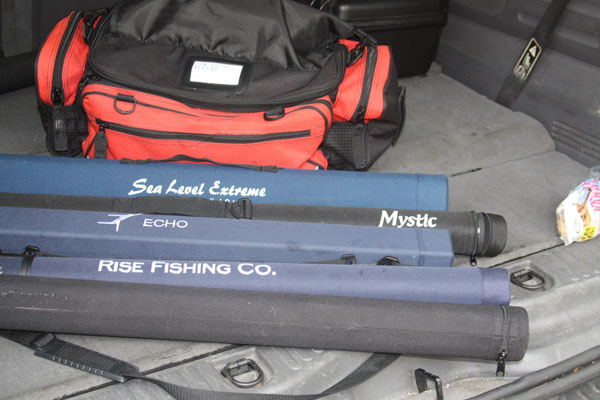
The Traveling Rod Road Show. The rods’ four week journey: The Florida Keys, Florida surf and Broward canals, “The Trail,” Stuart, Orlando and Jacksonville, Fl0rida; Delaware, to Greenport and Montauk, Long, Island, New York. Note the bottom rod is case is SFRC’s 9-weight. The Sea Level was borrowed from FLM.com contributor Grant Gisondo, who says he’d never leave the dock without one.

Nautilus came through the battles unscathed. We also had a spare spool with 10-weight line and it was used on all the rods with the exception of the Sea Level Extreme. All other fly lines used were SA Mastery Textured 9- and 10-weights.


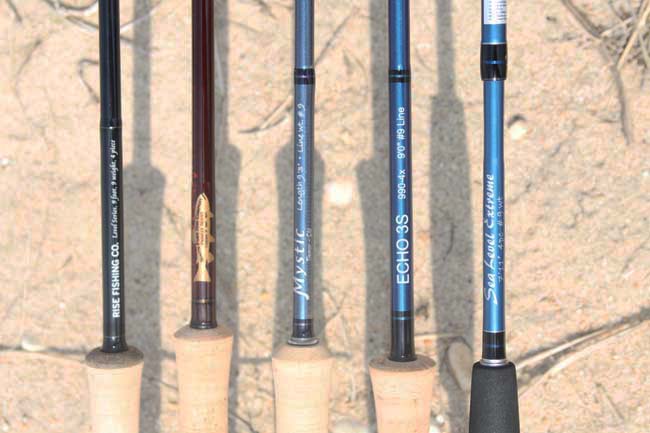

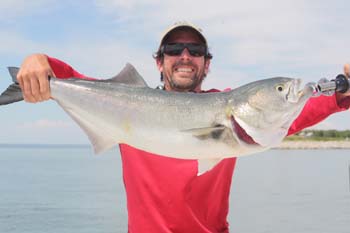
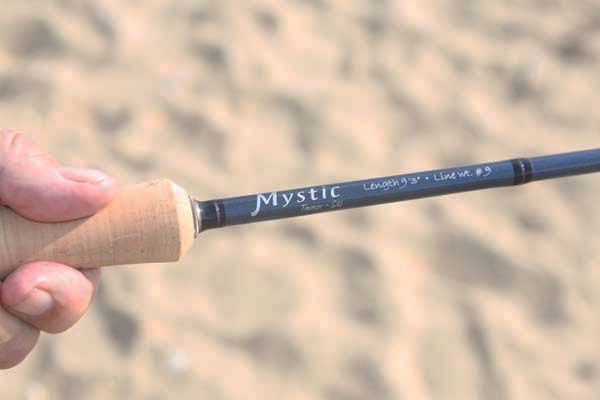


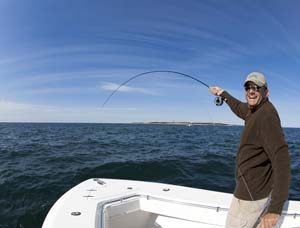
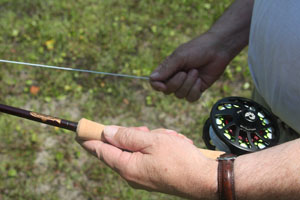
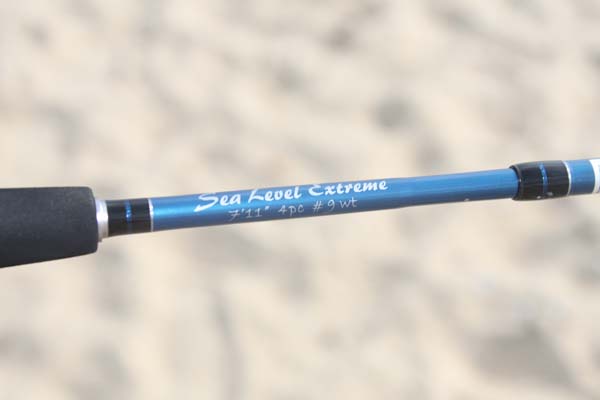
Join the discussion 3 Comments